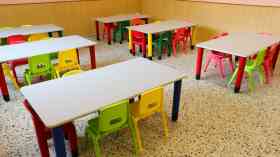Making the most of lunchtime

Every September brings a wave of headlines about the costs of the return to school – new uniforms, changing bus fares and the going rate for pocket money – but this year, the price of school meals was under particular scrutiny ahead of the autumn term.
Which? research of local authorities around the country highlighted an average rise of 3 per cent in meal prices for the back to school period (the same as that reported in our annual survey of school lunch take up, published in July). Whilst far below wider food inflation rates, it was a timely reminder of the importance of increasing take up of healthy school meals if we’re going to keep them affordable for everyone.
Value for money
We’ve always been clear about the role of affordability in growing the school meals market. School meal take up is particularly sensitive to changes in price, while a poll of parents carried out for us this summer suggests that families would be prepared to try healthy school meals if they were on special offer.
Our director of programmes and partnerships, David Edwards, puts it like this: “At an average of around £1.93, school meals are still good value for money – there aren’t many places on the high street where you can get a nutritious, two-course meal for that price.
“But ultimately, increasing the number of children eating school meals will mean that schools can spread their costs, reducing the need for subsidy in the longer-term.
“That’s why we’re urging schools to continue investing in good food; helping them to make the lunch experience better so that pupils want to choose school meals, and supporting caterers to operate more efficiently.”
Better performance
Let’s just remember why this is important: when children eat better at lunchtime, they do better in the afternoons. Our research has found that primary school children are around three times more likely to concentrate and be on-task with their teachers after lunch if they’ve had a healthy meal in a decent environment, and in secondary schools pupils are around 18 per cent more focused. Teachers often talk to us about the impact on pupils’ behaviour when they’ve had a proper lunch rather than filling up on foods full of empty calories, and smaller studies comparing exam results at schools with breakfast clubs to those at schools without found pupils got better results where healthy breakfasts were on offer.
Healthy school lunches are also making a difference for children’s health and wellbeing. In the short time since the introduction of national standards for school food, primary school pupils are already eating more of their 5-a-day at school and are being offered a lunch which is lower in fat, sugar and salt than the average lunch of 2005. And for many pupils having free school meals, their school lunch may be the only proper meal they eat in a day. With almost a third of children either overweight or obese by the time they reach year 6, school meals play a key role in their education about making better food choices.
Boosting numbers
Take up is on the rise – climbing in both primary and secondary schools for the third year running – but school meal eaters are still in the minority. Regardless of the reality of tasty food, cooking from scratch and creative menus, for many pupils and parents school meals still have an image problem. The legacy of decades of decline and parents’ own memories of disappointing dinners in the school hall isn’t easily shaken off.
It makes the school meals market one of the toughest nuts to crack. Boosting take up numbers – and keeping them there so that prices can remain affordable – takes creativity, innovation and the energy to tackle a whole range of contributing factors. Solutions don’t have to be large-scale or costly, but creativity can be in short supply when you’re busy enough with just keeping your service going.
Training & development
This is why training can pay back such a big return – and this gave us the starting point for a new series of low-cost training sessions. We’ve designed these specifically for the school food sector, combining the questions we’re asked most often and expertise gained from working with schools and caterers over the last six years.
How can you develop a flexible menu, but still make sure that it meets the national standards for school food? Flexibility within menu cycles can help you take advantage of seasonal ingredients and special offers from suppliers, to have a creative kitchen and to reflect school activities and events on your menu to as part of your marketing to pupils to increase your lunch numbers.
Schools that give children a great lunchtime experience can only do so with the support of parents and pupils. They use a whole school approach to healthy eating – building it into their curriculum and the school environment – to get over the barriers which can prevent families from choosing a healthy school meal instead of a packed lunch. But how can you apply this at your school? How can you get parents, pupils, staff and your community on board?
Free meals
For many children, a free school lunch can be the only full meal they eat in a day. Yet too many pupils who would qualify are either not registered to receive their free meal, or choose not to eat it. Why is this?
The reasons for this are many and complex, but there are simple solutions to many of the barriers. With a direct link between Pupil Premium funding and registration for free school meals, learning more is invaluable if you want to secure additional funding for your pupils who most need it, but more fundamentally, to make sure they also get the benefits of good school food.
Tools
Marketing is an essential weapon in your take up toolkit. How do you focus your resources for best impact? What are the most effective tactics?
Cooking is a fantastic way to help children learn. We know from our work with thousands of school-based cooking clubs across the country that cooking activities make an impact with children of all ages and abilities. But how can you use cooking to support different aspects of the primary curriculum? How does cooking engage pupils who do not do well in a traditional classroom?
Our work on these dilemmas and solutions gave birth to our new ‘How To’ programme. This set of one-day sessions covers a range of topics that each play a part in growing your school meals market, bringing additional funding to your school or building your offer to parents.
From increasing your free school meal take up, to engaging your parents and pupils with healthy food; creative marketing for your school meals even if your budget is limited; using cooking in the curriculum and developing flexible menus whilst still meeting the national standards for school food, you’ll walk away with practical actions and ideas that have been tried and tested in schools across the country.
Courses begin in October, with sessions in London and Birmingham and prices starting at £150 for one day. For more information visit www.schoolfoodtrust.org.uk/howto
Latest News
19/12/2025 - 09:54
The Education Committee has expanded its ongoing inquiry into the early years sector to examine how safeguarding can be strengthened in early years settings.
18/12/2025 - 09:25
The UK will be rejoining the Erasmus programme in 2027, following a package of agreements with the EU.
17/12/2025 - 09:31
Ofqual has fined exam board Pearson more than £2 million in total for serious breaches in three separate cases between 2019 and 2023 which collectively affected tens of thousands of students.
16/12/2025 - 09:19
The average funding rates will increase by 4.3% for under 2s, and by almost 5% for 3-and-4-year-olds.
15/12/2025 - 10:30
Local colleges are set to receive £570 million in government funding to expand training facilities in areas such as construction and engineering.







